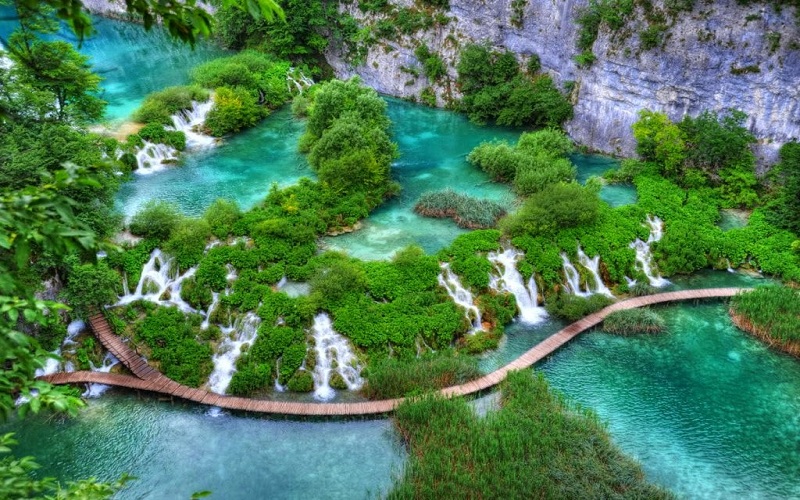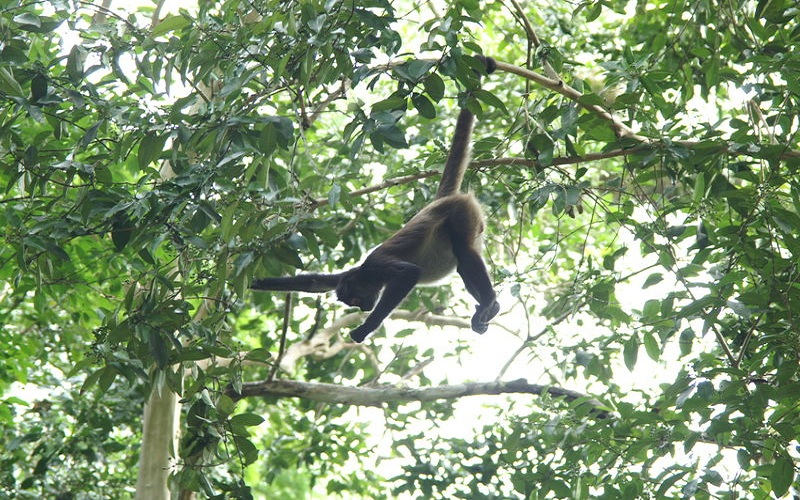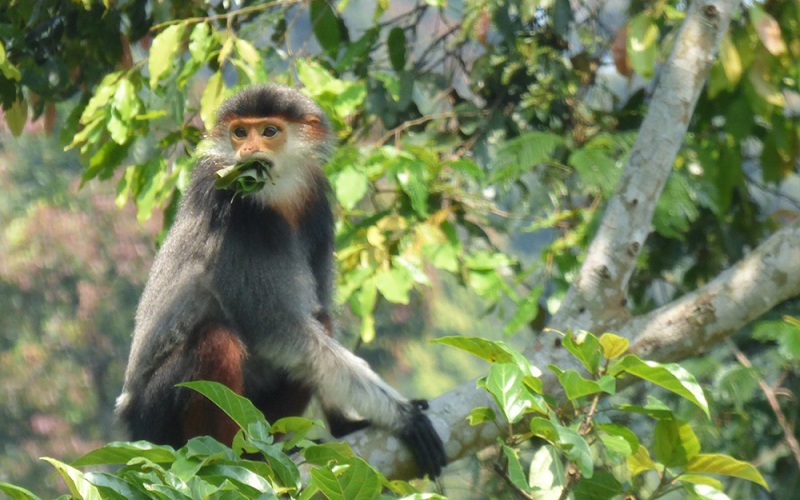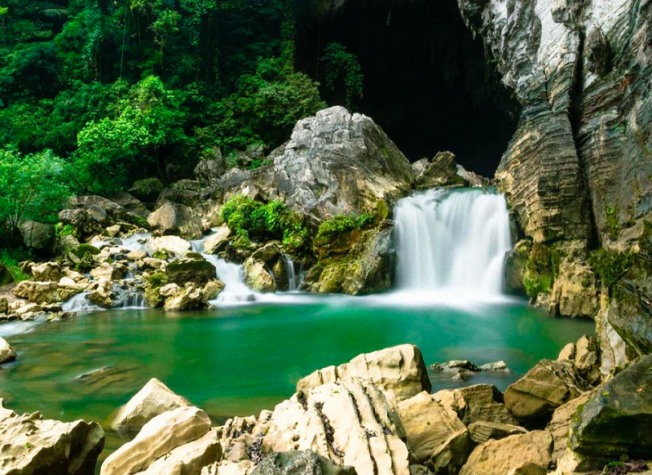Bach Ma National Park in Hue - Everythings You Need to Know
Bach Ma National Park, has been interested by many people because of its reputation for the biodiversity resources of many rare animal and plant species. In 1925, during the French colonial period, in order to protect the Edwards's Pheasant (Lophura edwardsii), the local government built and submitted to the French Colonial Ministry a project to establish a national park. In 1986, the forbidden forest Bach Ma - Hai Van was established with an area of 50,000ha.
- Location: Phu Loc District, Thua Thien Hue Province
- Opening Hours: Daily from 7.30AM - 5.30PM
- Entrance Fee: 60.000 vnd / ticket

In 1991, Bach Ma National Park was officially established with a total area of 22,031ha under the Ministry of Forestry. In 2008, Bach Ma National Park was expanded and expanded with a total area of 37,487ha. Currently, Bach Ma National Park is under the management of Vietnam Administration of Forestry.
1. Geographical Location of Bach Ma National Park:
- From 15059 'to 16016' north latitude.
- From 107037 'to 107054' East longitude.
- The North borders Phu Loc Forestry NN1TV Co., Ltd.
- The South borders A Ting and Ta Lu communes, Dong Giang district, Quang Nam province
- The East borders Hoa Bac commune, Hoa Vang district, Da Nang city
- The West borders Khe Tre town, Thua Thien Hue province
2. Terrain of Bach Ma National Park:
Bach Ma National Park is part of the Truong Son Bac range, with many mountain ranges with peaks over 1,000m high running from the West to the East and gradually descending to the sea. The terrain is rugged, strongly divided and very steep, the average slope of the whole region is 150-250, many places have steep slopes above 400.

At the foot of the mountains are narrow, long valleys with streams. clean creates a unique beauty to attract tourists, and contributes to improving the sub-regional climate.
3. Bach Ma National Park Weather:
The garden is located in the monsoon tropics. The annual average temperature of the entire Park is 250C, particularly in Bach Ma peak area is 19 0C (height> 1,200m). The average rainfall in the peak area of Bach Ma is about 8,000 mm / year, the average annual rainfall in the park is about 3,500mm / year.
The humidity in the Bach Ma peak area is quite high, accounting for 90%. The average humidity of the whole region is 85%. Bach Ma National Park is the place to regulate water sources for major rivers in the region such as Truoi river, Cu De river and Ta Trach river (upstream of Huong river).
4. Geology of Bach Ma National Park:
The total surveyed area of the park is 37,487 ha, of which 98.9% is in the Feralit soil group, created by the substrate including the following parent rock groups:
- Macadamic acid group, symbol (a)
- Clays and metamorphic rocks, symbol (s)
- Sample group of ancient alluvial substance, symbol (p)
- Sample group of new alluvial substance, symbol (Pb)
The geological foundations of the Bach Ma mountain range are less complicated, most of which are clay and metamorphic rocks, acid magma rocks. At an altitude of over 900m there is yellow feralite soil in the mountains developed from acid Mac Ma rock. Altitude below 900m is mainly yellow or red yellow feralite soil. The valleys have sloping lands along rivers and streams.
5. Forest Resources of Bach Ma National Park:
- About animals:
Through investigation, the study has recorded 1,715 species (accounting for 7% of the total number of species in the country) belonging to 52 orders, 258 families, 1080 varieties. The fauna here is very diverse, there are many endemic and rare species and detailed statistics: Insects have 17 orders, 137 families, 708 varieties, 1,029 species; Fish 6 orders, 17 families, 46 genera and 57 species; Amphibian - Reptile has 3 orders, 19 families, 64 varieties, 134 species; Birds have 16 orders, 57 families, 189 varieties, 363 species; Animal has 10 orders, 28 families, 73 varieties, 132 species.

Through the 2011 inventory results, there are many endemic, rare and endangered species included in Vietnam's Red Data Book, which need to be prioritized for conservation as follows:
- According to the Vietnam Red Book, the Park has 69 listed species that need to be protected, typically such as: Brown-shanked douc langur (Pygathrix nemaeus nemaeus), Fire wolf (Cuon alpinus), Binturong (Arctictis binturong), Leopards (Panthera pardus), Saola (Pseudoryx nghetinhensis), Megamuntiacus vuquangensis, Truong Son Caninmuntiacus truongsonensis, Lophura edwardsi, Brown pigeon (Columba punicea), Brown Mound (Python molurus) , Snakes (Ptyas korros), Yellow-eyed box turtle (Cuora galbinifrons), Big-headed turtle (Platysternon megacephalum), Eel (Anguilla marmorata).

- There are 15 endemic species, mainly focusing on the Bird class, accounting for 13 typical species with white pheasants (Lophura nycthemera), Edwards's Pheasant (Lophura edwardsi), Middle Eastern Chicken (Arborophila merlini), Hunchback throat chicken (Arborophila rufoguralis), Horned viper (Trimeresurus cornutus), Yellow-headed box turtle (Cuora galbinifrons) ...
- There are 2 new species of bees discovered and named Bach Ma: Spinaria bachmana Long & van Achterberg, Vietorogas bachma Long.
- About plants:
About the mushroom and flora system, there are 2,373 species (accounting for nearly 17% of the total plant species in the country). Specific details: Mushrooms have 55 families, 332 species. Mosses have 25 families, 87 species; Ferns and close relatives have 28 families, 183 species; The gymnosperm branch has 7 families, 22 species; The Angiosperms industry has 157 families, 1,749 species, of which there is 464 species of One-leaf shoots and 1,285 species of Double-leaved leaves.
Through the 2011 inventory results, many endemic and rare plant species recorded in the Vietnam Red Book should be prioritized for conservation:
- According to the Vietnam Red Book (2007), there are 73 species that need to be protected, including typical species such as Fokienia hodginsii, Aquilaria crassna, Sindora tonkinensis, and Mahogany mahogany (Sindora tonkinensis) Sindora siamensis), Kien Kien (Hopea pierrei), Kim Tuyen (Anoectochilus roxburghii), Seven leaves a flower (Paris polyphylla), ...
- Endemic with 204 species, including typical species such as: Nageia fleuryi, Schofflera pacoensis, Canna subulatum, Northern Emperor (Peltophorum dasyrrachis), Song Vietnamese nails (Diplopanax vietnamensis), Narrow leaves (Elaeocarpus angustifolius), Rhododendron fortunei, Rhododendron fortunei, Glochidion bachmaensis, Central stingray (Cryptocarya annamensis), Pre-mountain Dinh (Strychnos dinhensis) ), ...
- There are 5 new species for science, first discovered and named Bach Ma, including:
- White horse weasel (Cissus bachmaensis Gagnep.)
- White Horse (Elaeocarpus bachmaensis Gagnep.)
- Bach Ma conical leaves (Licuala bachmaensis Henderson, N.K.Ban & N.Q.Dung)
- Bach Ma Cloud (Calamus bachmaensis Henderson, N.K.Ban & N.Q.Dung)
- Bach Ma frog (Glochidion bachmaensis Thin)
6. How to visit Bach Ma National Park?
Distance from Bach Ma to Hue is about 55km, to Danang is about 68km and to Hoi An is about 97km. If you love to discover the Beautiful Nature of Bach Ma National Park in a day. You can join Daily Group Tour to Bach Ma from Hue, Hoi An or Danang City. If you do not like to join tours, then Private Car to Bach Ma from Hue, Hoi An or Danang are also available.
See Also:

![]()
![]()
![]()
![]()
![]()
Best of Vietnam

Best Vietnamese Food You Have to Try in Vietnam
Best Food in Vietnam: Vietnamese Traditional Food is top World well known to be both healthy and...

10 Best National Parks in Vietnam
Vietnam Travel Guide: If you look for the Best Wildlife Discovery Experience in Vietnam, here are...
Read More
Best Souvenir to Buy in Vietnam
If you look for Best Things to Buy when traveling to Vietnam to bring home for your family & friends...
Read More
The 10 Best Places to Visit in Vietnam
Vietnam Travel Guide: Home to an extensive collection of historical and cultural attractions,...
Read More
Top 10 Museums You Should Not Miss in Vietnam
Vietnam, 4.000 years old country has a unique and lengthy history, culture with 54 ethnic groups. It...
Read MoreFind your trip
Vietnam Best Tours
Vietnam Car Rental
Vietnam Travel Blog
- Vietnamese People: Origin, History, Culture and Traditions
- Vietnam Currency: Best ATM and Places to Exchange Money
- Vietnam Map: Regions, Cities & Provinces Map of Vietnam
- What is illegal Things in Vietnam: Rules & Laws for Tourists
- Best Time to Travel to Vietnam to Avoid the Bad Weather
- Vietnam News: Population & Religions of 54 Ethnic Groups









